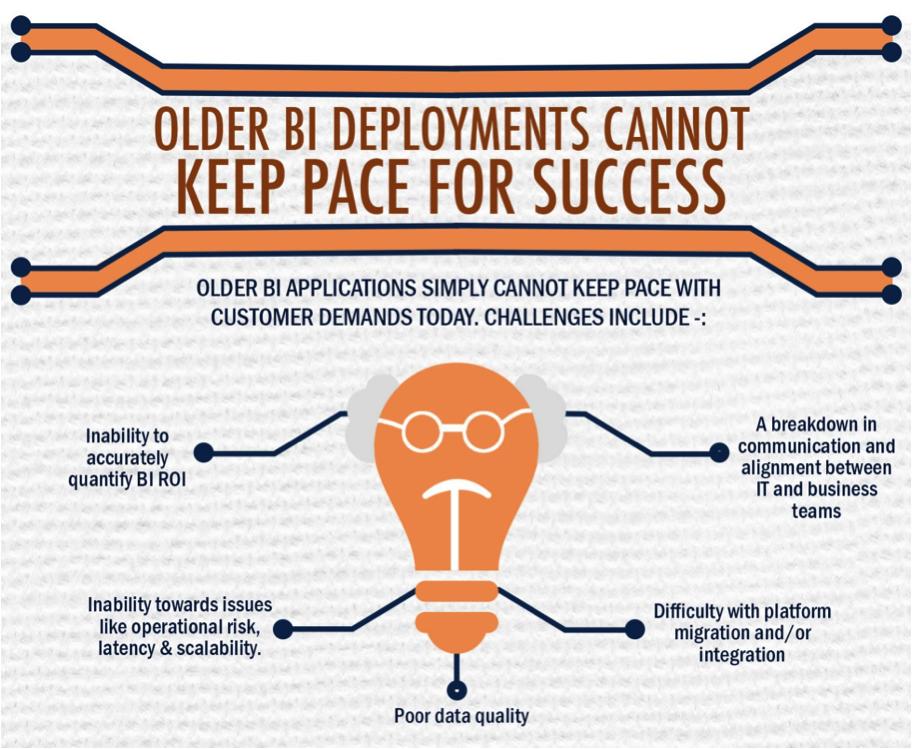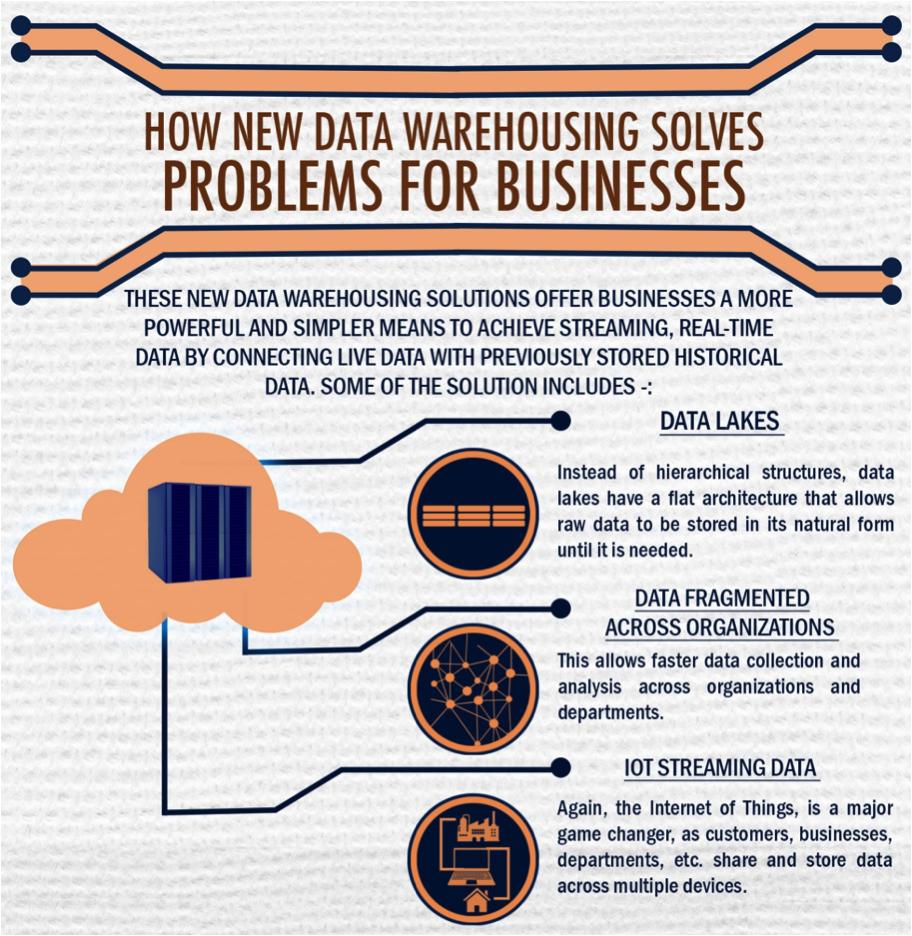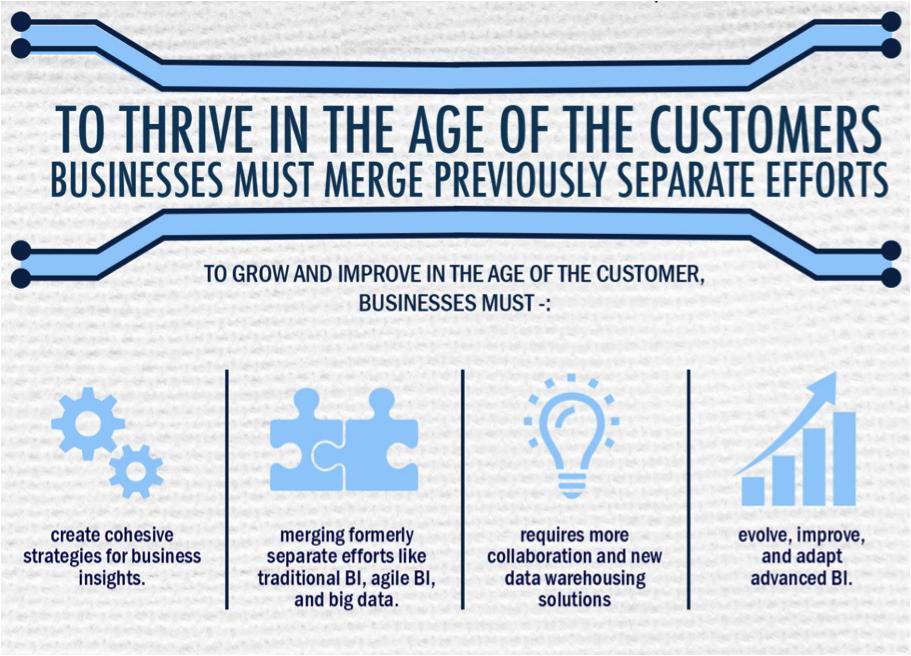
There is no denying it - we live in The Age of the Customer. Consumers all over the world are now digitally empowered, and they have the means to decide which businesses will succeed and grow, and which ones will fail. As a result, most savvy businesses now understand that they must be customer-obsessed to succeed. They must have up-to-the-second data and analytical information so that they can give their customers what they want and provide the very best customer satisfaction possible.
This understanding has given rise to the concept of business intelligence (BI), the use of data mining, big data, and data analytics to analyze raw data and create faster, more effective business solutions. However, while the concept of BI is not necessarily new, traditional BI tactics are no longer enough to keep up and ensure success in the future. Today, traditional BI must be combined with agile BI (the use of agile software development to accelerate traditional BI for faster results and more adaptability) and big data to deliver the fastest and most useful insights so that businesses may convert, serve, and retain more customers.
Essentially, for a business to survive, BI must continuously evolve and adapt to improve agility and keep up with data trends in this new customer-driven age of enterprise. This new model for BI is also driving the future of data warehousing, as we will see moving forward.
Older BI Deployments Cannot Keep Pace for Success
As valuable as older BI applications and deployments have been over the years, they simply cannot keep pace with customer demands today. In fact, decision-makers in IT and business have reported a number of challenges when they have only deployed traditional BI. These include:
Poor data quality. Even if data mining is fast and expansive, if the quality of the data is not up to par, it will not be useful in creating actionable intelligence for important business decisions.

Keeping Up with Customer Demand Through New BI Deployments
So how can combining traditional BI, agile BI, and big data help businesses grow and succeed in today’s market? Consider that big data gives businesses a more complete view of the customer by tapping into multiple data sources. At the same time, agile BI addresses the need for faster and more adaptable intelligence. Combine the two, along with already existing traditional BI, and efforts that were once separate can work together to create a stronger system of insight and analytics.
Through this new BI strategy, businesses can consistently harness insights and create actionable data in less time. Using the same technology, processes, and people, it allows businesses to manage growth and complexity, react faster to customer needs, and improve collaboration and top-line benefits – all at the same time.
The Drive for a New Kind of Data Warehousing
A new kind of data warehousing is essential to this new BI deployment, as much of the inefficiency in older BI deployments lies in the time and energy wasted in data movement and duplication. A few factors are driving the development and future of data warehousing, including:
How New Data Warehousing Solves Problems for Businesses
So how do new data warehouses change the face of BI and big data? These new data warehousing solutions offer businesses a more powerful and simpler means to achieve streaming, real-time data by connecting live data with previously stored historical data.
Before, business intelligence was an entirely different section of a company than the business section, and data analytics took place in an isolated bubble. Analysis was also restricted to only looking at and analyzing historical data – data from the past. Today, if businesses only look at historical data, they will be behind the curve before they even begin. Some of the solutions to this, which new data warehousing techniques and software provide, include:

To Thrive in the Age of the Customers – Businesses Must Merge Previously Separate Efforts
Now that we are seeing real-time and streaming data, it is more important than ever before to create cohesive strategies for business insights. This means merging formerly separate efforts like traditional BI, agile BI, and big data.

Business agility is more important than ever before to convert and retain customers. To do this, BI must always be evolving, improving, and adapting, and this requires more collaboration and new data warehousing solutions. Through this evolution of strategies and technology, businesses can hope to grow and improve in The Age of the Customer.
Examples of the Future of Data Warehousing
And what exactly will the future of data warehousing look like? Companies like SAP are working on that right now. With the launch of the BW/4HANA data warehousing solution running on premise and Amazon Web Services (AWS) and others like it, we can see how businesses can combine historical and streaming data for better implementation and deployment of new BI strategies. This system and others like it work with Spark and Hadoop, as well as other programming frameworks to bring data and systems of insight into the 21st century and beyond.


27 t/m 29 oktober 2025Praktische driedaagse workshop met internationaal gerenommeerde trainer Lawrence Corr over het modelleren Datawarehouse / BI systemen op basis van dimensioneel modelleren. De workshop wordt ondersteund met vele oefeningen en pra...
29 en 30 oktober 2025 Deze 2-daagse cursus is ontworpen om dataprofessionals te voorzien van de kennis en praktische vaardigheden die nodig zijn om Knowledge Graphs en Large Language Models (LLM's) te integreren in hun workflows voor datamodel...
3 t/m 5 november 2025Praktische workshop met internationaal gerenommeerde spreker Alec Sharp over het modelleren met Entity-Relationship vanuit business perspectief. De workshop wordt ondersteund met praktijkvoorbeelden en duidelijke, herbruikbare ri...
11 en 12 november 2025 Organisaties hebben behoefte aan data science, selfservice BI, embedded BI, edge analytics en klantgedreven BI. Vaak is het dan ook tijd voor een nieuwe, toekomstbestendige data-architectuur. Dit tweedaagse seminar geeft antwoo...
17 t/m 19 november 2025 De DAMA DMBoK2 beschrijft 11 disciplines van Data Management, waarbij Data Governance centraal staat. De Certified Data Management Professional (CDMP) certificatie biedt een traject voor het inleidende niveau (Associate) tot...
25 en 26 november 2025 Worstelt u met de implementatie van data governance of de afstemming tussen teams? Deze baanbrekende workshop introduceert de Data Governance Sprint - een efficiënte, gestructureerde aanpak om uw initiatieven op het...
26 november 2025 Workshop met BPM-specialist Christian Gijsels over AI-Gedreven Business Analyse met ChatGPT. Kunstmatige Intelligentie, ongetwijfeld een van de meest baanbrekende technologieën tot nu toe, opent nieuwe deuren voor analisten met ...
8 t/m 10 juni 2026Praktische driedaagse workshop met internationaal gerenommeerde spreker Alec Sharp over herkennen, beschrijven en ontwerpen van business processen. De workshop wordt ondersteund met praktijkvoorbeelden en duidelijke, herbruikbare ri...
Deel dit bericht